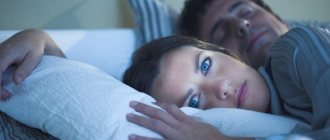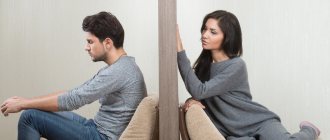June 23, 2021
Quality sleep is extremely important for the body. This affects the psychological and physical state of a person. During sleep, all functions of the body are restored, toxins are eliminated, the subconscious mind works intensively, and the information received during the day is absorbed. This process is as important as breathing and eating.
With the accelerated pace of life, people do not attach due importance to sleep. This is due to heavy workload, problems falling asleep, increased anxiety, leading to insomnia. But there are people who are prevented from getting enough sleep by a panicky fear of falling asleep for fear of dying in their sleep - hypnophobes. People with this fear may become exhausted as they become increasingly panicky as they prepare for bed. In order to fall asleep instantly, they need to use special drugs or rituals.
Over time, the fear of falling asleep begins to cause serious problems with physical and psychological health. It is important to work with this problem. In this article we will look at the common causes, symptoms and treatments for hypnophobia.
Causes of hypnophobia
- Constant nightmares are the main factor provoking the development of hypnophobia. When working with fear caused by difficult dreams, the most difficult task is to establish the true cause of the frightening dreams. According to experts, nightmares may be associated with unresolved internal conflicts or feelings of guilt. Anxiety that arises in the evening or at night can also affect the nature of dreams.
- Fear of dying in your sleep. People suffering from cardiovascular diseases and those who snore heavily are afraid of not waking up in the morning. Sudden cardiac arrest at night is not uncommon, and snoring can be a symptom of such a serious disease as obstructive sleep apnea syndrome (breathing arrest). With this disease, as a result of relaxation of the pharyngeal muscles and collapse of the respiratory tract, the breathing process of a sleeping person temporarily stops (for at least 10 seconds). The impetus for the development of a phobia is the unexpected death of a loved one in a dream.
- Fear of losing control over what is happening around and awareness of one’s vulnerability. The anxiety may be based on something called genetic memory. At all times, a sleeping person has been an easy prey for predators and enemies.
- A misfortune that occurred during sleep. Perhaps one day a hypnophobe woke up in an apartment engulfed in flames, or at night the home was destroyed by a natural disaster, and a person’s life was in danger.
- Living in a region where a man-made disaster or destructive natural phenomenon is possible, as well as in a zone of military conflict. For example, after the explosion at the Chernobyl nuclear power plant and the urgent evacuation from radiation-contaminated lands, the number of complaints about sleep problems and fear of falling asleep increased. The impetus for the development of the disorder was the shock caused by the tragedy. In the event of a military conflict, a person is afraid of falling asleep and dying from a shell hitting his home or when a building collapses.
- The desire to spend time on more important things or on another type of recreation.
- Close contact with a person suffering from hypnophobia. The phenomenon in which the fear of falling asleep occurs is called induced delusional disorder. With prolonged communication with an authoritative close relative or friend, a healthy person begins to develop the same delusional beliefs as the “carrier” of the phobia.
- Prolonged depression and excessive impressionability.
- A pathological connection between sleep and fear formed in the subconscious. Such a connection may arise due to frequent family quarrels, which greatly frightened the child and prevented him from falling asleep.
- Children's enuresis. If, after involuntary urination at night, the baby is severely scolded, punished or ridiculed, over time a persistent fear of falling asleep develops.
- Horror films, scary books, scary bedtime stories.
- Fear may be based on another phobic disorder - taphophobia, that is, the fear of falling into a lethargic sleep and being buried alive. However, with the current development of medicine, it is almost impossible to confuse lethargic sleep and death.
How does a phobia arise?
To this day, it is unknown how and why the phobia develops. Somnophobia is provoked by nightmares, events that led to a disaster, and various mental illnesses.
There is a version according to which the emergence of pathological fear occurred at the stage of evolution (so the fear of falling asleep was inherent at the genetic level). At night, people were attacked by animals and hostile tribes. When people were awake, they were so eager to survive.
The fear of sleep is pronounced in those who have previously experienced unpleasant moments and revived memories in their sleep; they cause anxiety. When a person gets scared, certain neurons are excited in the cerebral cortex. After some time, the individual can return to a normal, calm state. It happens that the signal does not fade away, neural fibers are formed (they include a peptide), which increases fear. The fear of falling asleep can also be activated by external factors.
Manifestation of hypnophobia
As bedtime approaches, a person suffering from hypnophobia begins to experience increased anxiety. In order to be able to sleep, people exhaust themselves with excessive physical activity or use sedatives and sleeping pills.
In cases of severe phobic disorder, the patient tries to avoid sleep by any means. A person can remain without proper rest for several days. A striking example of the manifestation of hypnophobia is demonstrated in the film “Nightmares on Elm Street” . The fear of falling asleep and becoming a victim of a mystical killer who comes in dreams brought the main characters to physical exhaustion.
Strong emotional stress can overwhelm a person when talking about a dream and when thinking about it.
Sometimes you can notice that every time before a night's rest, a hypnophobe performs some rituals. Systematic implementation of certain actions helps reduce the level of emotional stress.
Symptoms of the disorder
Afraid of falling asleep, a hypnophobe can drink coffee in the evening as if out of control / Photo by Jade Gorrod _ Flickr
Signs of hypnophobia are far from limited to the wording “I’m afraid to fall asleep” - people suffering from fear of sleep have to experience a whole range of symptoms of a psychological and physical nature that undermine health and interfering with leading a normal lifestyle. The first include:
- insomnia;
- a constant feeling of fear, increasing as the evening approaches and reaching its peak as soon as the person is in bed;
- a frightening feeling of helplessness and vulnerability in a dream;
- fear of falling asleep alone;
- obsessive thoughts about your death in a dream or the death of one of your relatives;
- fear of the dark - hypnophobes feel in danger in it, so they prefer to go to bed with the light on, making it even more difficult to fall asleep;
- confusion caused by constant anxiety;
- panic attacks, frightening hallucinations.
Physiological symptoms
Physiological symptoms are divided into primary and secondary. Primary are signs of the phobia itself, and secondary are its consequence and are caused by chronic lack of sleep.
Primary symptoms of hypnophobia:
- excessive sweating,
- shiver,
- cardiopalmus,
- rapid breathing or shortness of breath,
- nausea,
- thirst and dry mouth.
Secondary symptoms of hypnophobia:
- drowsiness, weakness, apathy, general malaise,
- problems with information perception, memory and thinking disorders,
- blurred vision and eye pain,
- difficulties with coordination of movements,
- throbbing headache
- cardiovascular diseases and pain in the heart area,
- excessive emotionality, tearfulness, increasing sensitivity.
Classical origins
Fear of the process of sleep or falling asleep arises solely due to destructive (far-fetched) reasons. This phobia is typical for people with morbid fantasies or those who have some other mental illness. For people with a mental disorder, clinophobia is already a secondary or concomitant syndrome.
The classic causes of clinophobia are most often the following fears::
- Fear of suffocation. This possibility is explained by severe chronic snoring or becoming entangled in bed linen.
- Nightmares.
- Be subjected to violence. Penetration of burglars or other people with malicious intentions into the apartment.
- The occurrence of man-made disasters. Earthquake, fire, gas leak, outbreak of nuclear war, etc.
- Sopor. An unconscious state with symptoms similar to death.
Consequences of hypnophobia
Hypnophobia negatively affects a person’s physical and mental health, so it must be treated, and treatment must be timely. The more severe a phobic disorder develops, the more damage it causes to all systems of the human body .
With a chronic lack of sleep, the immune system is weakened, the information received during wakefulness is not properly processed and absorbed, the removal of toxic waste products from the brain is slowed down, the hormone melatonin is not produced, and there is no quality rest.
A person suffering from hypnophobia becomes exhausted both mentally and physically. Due to a general deterioration in health, panic attacks may become more frequent.
Why sleep is important
A person needs quality rest for their mental and physical health. This is not only interesting activities and a pleasant time. During sleep, the body is restored: body functions return to normal, problems and malfunctions in all systems are eliminated, vital energy accumulates. This process is natural, it is in no way inferior in importance to breathing or eating.
For most people, such things do not seem obvious. They don't understand how sleep affects their quality of life. Panic uncontrollable fear of sleep is called hypnophobia. People with this type of anxiety experience constant anxiety and restlessness as soon as they begin to get ready for bed or feel physically tired. The individual is afraid to fall asleep. He begins to exhaust himself with insomnia; to instantly switch off, he needs special classes and rituals.
Somniphobia is one of the most problematic and painful phobias for humans. He may be afraid to fall asleep for several days; the hypnophobe brings his body to complete exhaustion and exhaustion. Both the psyche and the body suffer. After sleep, such an individual is depressed, overwhelmed, he constantly feels tired and irritable. Since stress becomes his life companion, apathy and depression arise.
If the fear of falling asleep starts, then serious health problems cannot be ruled out. Over time, a person develops neuroses, anger and aggression appear, and panic attacks, hallucinations and convulsions appear more and more often. Deterioration of vision and breathing problems are also acceptable against the background of constant stress.
Fear of sleep often becomes a pathology. The phobia is treatable. First of all, the owner of fear must acknowledge its existence.
Treatment of hypnophobia
When working with hypnophobia, it is very important to establish the true cause of fear. Otherwise, the patient may be prescribed the wrong treatment. For example, in the case of induced delusional disorder, in order to completely cure the “infected” person, it is enough to simply stop his contact with the “carrier” of the actual phobic disorder.
Other methods of working will not be effective. Induced delusional disorder is a very rare phenomenon, so specialists may miss the true cause of fear.
Hypnophobia can also be a symptom of thanatophobia or taphophobia. In this case, you need to work not with the fear of falling asleep, but with the underlying phobic disorder.
Getting rid of clinophobia
Based on the fact that a phobia is an exaggeration of a real risk, it is important for a person to realize the presence of the problem and its absurdity. In most cases, clinophobes understand their situation themselves, but it happens that a person has to explain the absurdity of his fear.
Facts and evidence are used to make the clinophobe aware of the problem. The most popular types of therapy are :
- Impact. A behavioral method is used, in which the patient is under the influence of a frightening situation. The person is placed in a bedroom and, under the influence of medications, is forced to sleep. Over time, the amount of active drugs in the tablets decreases until the release of a substance that imitates medicinal properties.
- Desensitization. The method is based on teaching the patient to enjoy a frightening state. Since relaxation and fear are incompatible, it is believed that this will gradually prevent the fear reaction from arising. To achieve the goal, relaxation is used to reduce muscle tension.
- Modeling. The doctor uses the behavior suggestion technique, that is, together with the patient, he studies options for the development of various phobic situations, finding the most favorable ones.
- Implosive. The essence of this therapy is to deliberately immerse the clinophobe in memories to study the reasons for the appearance of his phobia. At the same time, various options are offered to get out of this situation with a favorable outcome for the psyche.
- Rational. An influence is applied based on logical arguments and explanations of the underlying reasons for the appearance of fear. As a result, the patient develops a clear understanding of the artificiality of fear.
- Hypnosis. Contrary to the common belief that hypnotherapy is simply manipulation, it actually makes a person aware and removes his psychological barriers. But it cannot be applied to all people. In general, a person should not With the help of hypnosis, a specialist influences the cause of fear on an unconscious level, helping to get rid of it forever.
- Cognitive therapy. The most commonly used form of treatment. It involves adjusting thoughts and reducing anxiety. The ultimate goal of this type of therapy is to rid the clinophobe of distorted ideas and incorrect perceptions of reality regarding the fear experienced.
- Medication. According to various studies, such treatment is effective only in the initial stages of the onset of a phobia. It is customary to treat a progressive disease using a combined method. The combination of drug therapy with another type always gives a positive result. The drugs used are antidepressants, anxiolytics, antipsychotics and tranquilizers. The use of medications should only be carried out under the guidance of a doctor, since incorrect doses can cause even greater harm to the body.
Researchers have noted that often even the most severe forms of clinophobia can be cured if the patient has someone who takes on the role of a “sleep partner.” This is the kind of person who can convince him that he will protect him from any negative impact during sleep or wake him up in the event of a disaster.
Therapeutic treatment
If the cause of the phobia is childhood fears, then group role-playing games and psychoanalysis have a good effect.
For a disorder caused by a traumatic experience in a person’s recent past, rational and cognitive behavioral therapy and an existential approach are used. The following are also used in the treatment process:
- neuromuscular relaxation methods,
- ideomotor therapy,
- sensory reproduction,
- autogenic training.
Yoga, meditation and aromatherapy can also help reduce anxiety.
Mental reactions
Fear is an emotion that arises when an imaginary or real danger appears. This danger causes a state uncharacteristic for a person, leading to an outburst of feelings, and forces the individual to mobilize all his strength to avoid danger. In other words, fear is the body’s defensive reaction to a stressful situation.
Natural fear is inherent in nature , it works at the level of instincts and experience acquired over life. Even a child is born with so-called fear hormones. A newborn baby exhibits instinctive forms of defense when loud sounds occur or an object approaches unexpectedly. At the same time, the baby begins to show anxiety: suddenly freeze, throw up his arms, cry. This reaction is considered normal and even necessary.
But if anxiety arises in a situation that is conditionally safe, then this is already considered an anxiety disorder, that is, a painful mental state.
Drug treatment
In the case of a severe disorder, in which a person has a prolonged lack of sleep and serious physical exhaustion, sleeping pills and the hormone melatonin are prescribed. This allows the patient to get at least a little sleep and regain his strength.
Symptomatic drug treatment can be prescribed for disturbances in the functioning of organs or body systems. However, the main work should be aimed at ridding the patient of irrational fear , and not at treating secondary symptoms of phobia.
What will help in solving the problem
First, you can go to a psychotherapist.
It is quite possible to overcome the fear of falling asleep, but this will require a lot of effort, time and the help of professionals. The work always begins with a diagnosis - a psychotherapist or psychiatrist, during a personal conversation, asks the patient to describe in detail his experiences, emotions and physical sensations. To successfully get rid of a phobia, it is important to find out where the roots of the problem are hidden: in childhood night terrors, misfortunes that happened to loved ones, or diseases that undermined not only the health, but also the person’s mental balance.
Coping with a disorder that is identified in the early stages is much easier. In this case, turning to a specialist for help, you can hear: “If you are afraid of falling asleep, you need to concentrate on what will help you relax, relieve anxiety and tension, and forget about frightening moments.” Daily walking in the evenings, playing sports or regular exercise shortly before bed, swimming or simply spending time with your favorite pet will help with this task, which will bring a feeling of peace and security. Also, people with a fear of sleep are recommended to find an interesting hobby that would occupy their thoughts, not allowing them to switch to their fears.
Create the most cozy atmosphere in your bedroom / Photo by u/laneyr83 Reddit
Preparing for a night's rest and sleep itself should evoke pleasant associations in a person. To do this, you can make repairs or at least a small rearrangement in the bedroom, creating a cozy atmosphere, be sure to ventilate the room in the evenings and leave the window slightly open until the morning, choose a high-quality mattress and pillow, and at the slightest sign of anxiety, take a contrast shower. Giving up bad habits, following a drinking regime and a balanced diet that provides the body with the necessary amount of zinc, copper, magnesium, iron and calcium will also help improve your psychological state before bed.
Yoga and meditation bring good results - with their help you can relieve excessive stress and anxiety before bed, get to know your body better and understand its needs, learn to relax and get rid of fears. It is especially useful to combine these practices with aromatherapy - a few drops of patchouli or bergamot oil added to an aroma lamp or a cup of hot water will fill the bedroom with a pleasant aroma and give a feeling of mental comfort and peace. For the same purpose, you can make your own pillow for sleeping, filling it with medicinal herbs with a calming effect, for example, lavender or lemon balm.
And yet, the main method of treating fear of sleep is psychotherapy.
It is under the guidance of an experienced specialist that the patient can look into his past and find in it the causes of worries and fears. As a rule, a few sessions are enough for a person to realize the groundlessness and far-fetchedness of his experiences and, with the help of a psychotherapist, find effective ways to deal with them. The main thing is that the patient must understand that his disorder must be treated - somniphobia can make a person’s life unbearable, destroying his psyche and physical health more and more every day.
Ambient atmosphere
When working with hypnophobia, it is important what attitude towards the patient is shown by his relatives. If an anxious person feels more confident in the presence of loved ones, then one of the relatives should stay close to the hypnophobe during his sleep.
Criticism and ridicule can aggravate the emotional stress of the patient. Having a pet can help reduce anxiety. A favorite activity or hobby helps to partially repress negative thoughts.
Childhood fears
There are several groups of fears not caused by enuresis, which are more common in children, but in adults they develop relatively rarely and usually have a rational basis.
The strongest is the fear of death. It can develop after a tragic event, such as the death of a grandmother. The child begins to feel that if he falls asleep, he will end up dead or be considered dead. Children with developed imagination often suffer from frightening dreams after watching aggressive films or cartoons. Even good fairy tales can provoke the development of a pathological condition, because they contain insects, fantastic animals, and wizards. These characters are transformed by the subconscious into frightening images, and the child is afraid not only to fall asleep, but even to stay in a dark room. It is important for parents not to miss the moment when the first signs of a problem appear, otherwise it will be difficult to correct the situation later.
The peculiarity of children's thinking is such that dreams are inseparable from reality. The kid is sure: everything that scares him actually exists, but appears only when he is sleeping. Sometimes children begin to experience fear of something that actually exists, but frightened them in a dream. This could be anything from spiders to a chair, meaning the object is not necessarily aggressive or dangerous.
How to improve your sleep quality?
- The sleeping place should be comfortable.
- Before going to bed, you need to ventilate the room well.
- Your daily diet should include more fruits and foods containing zinc, copper, calcium, iron and magnesium. Additionally, you can take vitamins.
- It is necessary to give up alcohol and quit smoking.
- Sports and evening walks will help reduce the likelihood of painful dreams.
- You should avoid books, films and games with scary content.
Characteristic signs
From the outside it may seem that a person is experiencing slight anxiety, unfounded. Those who suffer from somniphobia are accustomed to receiving a lot of useless advice, because those around them are sure that anxiety before bed is a trifle that can be easily dealt with through willpower. Indeed, excessive suspiciousness is characteristic of some people, especially women, but true phobia has nothing in common with it. It usually starts with banal fear. The latter always has real reasons, for example :
- Fear that there will not be enough time for important things. A person worries, feels guilty about going to bed, although there is still so much to do. The result is insomnia and lost time.
- Fear of oversleeping. A responsible meeting, strict bosses, the need to catch a train, a plane - all this does not allow you to sleep, and even several alarm clocks set one after another with an interval of several minutes cannot save you.
- Fear of missing out on something important. This could be a long-awaited letter, message, notice of an event, or news. A person is afraid to leave the computer and go to bed, re-reading the same news or wandering aimlessly through websites until he exhausts himself.
- Feeling of defenselessness. A person loses the ability to fall asleep normally when he finds himself on a train, a hotel, or another house. A feeling of anxiety occurs when moving to a new home or on a business trip, when an unusual place does not seem safe enough. Over time, fear acquires an obsessive connotation and develops into a phobia.
- Scary dreams. Nobody likes to have nightmares. Naturally, the brain of a person who often dreams of them resists the need to fall asleep. Meanwhile, it is enough to give up some bad habits for dreams to become pleasant and calm. Watching TV, reading thrillers, computer games with elements of aggression and violence, a hearty dinner before bed - all this contributes to the brain giving out a portion of nightmares at night. Regardless of what a person dreams of in such a state, it will be accompanied by a feeling of horror and panic.
Fear of sleep is a phobia that always begins with mild anxiety. To avoid developing somniphobia or hypnophobia, you should pay attention to unpleasant symptoms in time and take measures to improve your condition.
Torture by sleep deprivation (sleep deprivation)
The negative consequences of lack of sleep have been known for a long time. Sleep deprivation was used as torture both many centuries ago (for example, in Ancient China) and in the recent past. In 1936-1938, NKVD officers exhausted prisoners with interrogations that lasted several days without a break for sleep.
Similar methods of torture were used on American pilots captured during the Vietnam War. People were forced to sit on a chair in the same position for several days, without giving the prisoners the opportunity to sleep.
In the 2000s, in the American Guantanamo Bay camp, prisoners were harassed by bright spotlights and loud, continuous music that did not allow them to rest or sleep.
However, sleep deprivation can also be used to benefit a person. In 1966, German psychiatrist Walter Schulte began using sleep deprivation techniques to treat various types of depression . Until now, sleep deprivation is considered the most effective method of treating depressive conditions.
Sleep disturbance
Arthritis
Rheumatism
42678 06 November
IMPORTANT!
The information in this section cannot be used for self-diagnosis and self-treatment.
In case of pain or other exacerbation of the disease, diagnostic tests should be prescribed only by the attending physician. To make a diagnosis and properly prescribe treatment, you should contact your doctor. Sleep disturbance: causes of occurrence, what diseases it occurs with, diagnosis and treatment methods.
Definition
Sleep disturbance, or insomnia (insomnia), is a general term that includes difficulty falling asleep, problems staying asleep, and waking up too early. As a result, during sleep a person cannot fully restore strength and performance, which reduces the quality of life. Sleep disturbance to one degree or another is observed in almost half of the adult population, but only in 9–15% of people does this problem become clinically significant. In older people, chronic insomnia is observed much more often than in young people - more than 55% of cases.
With any sleep disturbances, a person experiences fatigue, decreased attention or memory, depression, depression, and decreased vital activity.
Types of sleep disorders
Depending on the cause of sleep disorders, primary and secondary insomnia are distinguished. When diagnosing primary insomnia, organic, psychiatric, or neurological causes for sleep disturbance are not noted. Secondary insomnia is the result of various diseases, taking stimulants, or any unfavorable external conditions.
Sleep disturbances can be acute (transient), short-term (up to 6 months) and chronic (more than six months). Acute sleep disturbance can occur in any person under the influence of stress, overexcitation, or due to time zone change. Chronic insomnia develops in people predisposed to it. Typically, this condition affects elderly patients, women, people who, for one reason or another, sleep no more than 5 hours a day, as well as those who experience prolonged absence from work, marital divorce, psychological and psychiatric trauma, and patients with chronic diseases.
Possible causes of sleep disorders
Difficulty falling asleep is the most common complaint of patients. The desire to sleep that a person experiences before going to bed, but it disappears under the influence of a variety of factors when the person lies down. These may be unpleasant thoughts and memories, the inability to find a comfortable position due to restlessness in the legs, pain or itching, or extraneous sounds. A light drowsiness is disturbed even by the slightest noise, and sometimes a person who has fallen asleep thinks that “he hasn’t slept for a minute.”
There can be many reasons for such difficulty falling asleep, in particular, lack of fatigue, spending a long time in bed during the day, irregular bedtime, anxiety, illnesses that cause itching or pain.
A common complaint is unpleasant sensations in the lower extremities (pins and needles, trembling, tingling, burning, twitching), which force you to constantly change the position of your legs (restless legs syndrome). Symptoms are significantly weakened or disappear completely with movement. The best effect is often achieved by walking or simply standing. Recently, the proportion of patients who have problems falling asleep due to the consumption of stimulating drinks (tea, coffee, energy drinks) in the evening, as well as the abuse of medications (caffeine, psychostimulants, some antidepressants, antipsychotics, nootropics) has increased.
Problems with maintaining sleep mainly consist of frequent awakenings, after which it is difficult to fall back to sleep, and a feeling of “shallow” sleep. The reasons for awakening can be very different (dreams, fears, nightmares, breathing problems, palpitations, the urge to urinate).
Most often, chronic insomnia is a symptom of neurological and mental diseases.
Complaints of poor sleep are typical for patients with stroke, dementia, Parkinson's disease, and Alzheimer's disease. Mental illnesses such as depression, schizophrenia, and anxiety-manic states are also accompanied by sleep disturbances.
In many cases, frequent awakenings at night are associated with sleep apnea.
This respiratory disorder occurs during snoring due to the collapse of the tissues of the pharyngeal ring during inspiration and is characterized by a short-term cessation of breathing, which is accompanied by a decrease in blood oxygen levels and interruption of sleep.
Disruption of the circadian rhythm almost always leads to chronic insomnia. This situation occurs during shift work and shift work, as well as among those who sit for a long time in the evening watching TV or a computer. Excess blue light from screens in the evening and night hours causes desynchronosis - a disruption of the circadian biorhythm, which, in turn, leads to sleep disturbances.
Frequent awakenings can be a consequence of cardiovascular (arrhythmias, arterial hypertension), pulmonary (COPD), musculoskeletal (arthritis, rheumatism), genitourinary (prostatitis, urinary incontinence) and endocrine diseases.
Problems with early morning awakening are observed in older people, people suffering from depressive disorders, and panic attacks. As a rule, sleep is interrupted at 4–5 o'clock in the morning and does not resume. Immediately after waking up, patients note a flood of negative thoughts rushing over them. In the morning and during the day they complain of a “broken” state, they have decreased performance, and constant drowsiness.
Which doctors should I contact for sleep disorders?
Initially, you should consult a general practitioner to determine the true cause of insomnia and identify possible concomitant diseases that may lead to sleep disturbances.
If you suspect depressive syndrome, you should consult a psychotherapist or neurologist. With successful treatment of neuropsychiatric disorders, sleep usually returns to normal.
In cases where diagnosing sleep disorders is difficult, the therapist refers the patient to a somnologist.
Diagnosis and examinations for sleep disorders
When diagnosing sleep disorders, the first step is to understand whether insomnia is primary or secondary. It should be borne in mind that about 80% of cases of sleep disorders are caused by various diseases. Along with complaints of poor sleep, the following factors should be taken into account: snoring, excess weight, arterial hypertension, neurological disorders (stroke, traumatic brain injury), the presence of diseases that can cause pain at night (rheumatism, myalgia, arthritis of various etiologies) or itching (psoriasis, herpes, thyroid and liver diseases).
Symptoms and manifestations of fear of loneliness
The course of such a disorder can be so invisible that it is sometimes simply impossible to identify it. This behavior is typical for people who lack self-confidence, residents of modern cities, as well as teenagers.
How to cope with the fear of the dark on your own as an adult
Experts offer What to know about nyctophobia several options.
Practice muscle relaxation
In the 1920s, American scientist and physician Edmund Jacobson developed What is Jacobson's Relaxation Technique? progressive muscle relaxation, which helps cope with anxiety, depression, stress and phobias. Jacobson found that to achieve deep relaxation, you need to consistently tense your muscles and then relax them.
You can start with your hands, then move to your face, from there to your neck, back and chest, and finally to your legs. In this case, it is recommended to strongly tense the muscles of the part of the body on which you are currently focused for 5-10 seconds, and then relax and focus on this sensation for 15-20 seconds. And then move on to the next area until the whole body relaxes and the panic subsides.
Try it











